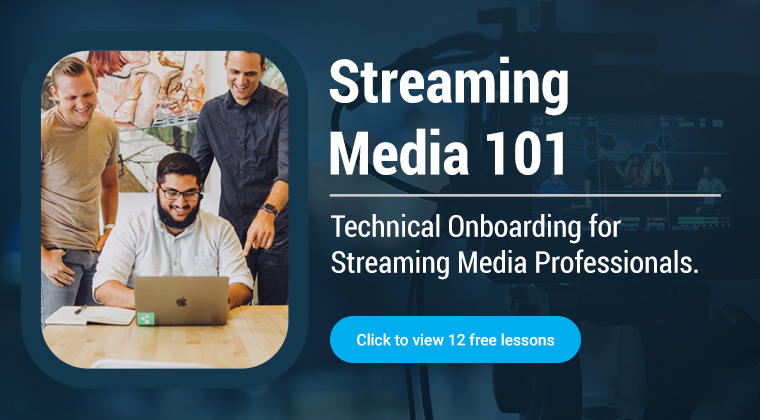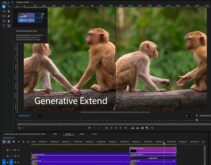If you edit using the Adobe Creative Suite, you’ve doubtless heard about the updates released just prior to NAB 2025 (officially the 25.2 release). This article notes the key new features available in my video editor of choice, Adobe Premiere Pro. Generative Extend Generative Extend lets you extend video clips by up to two seconds and audio clips by up …
Read More »TV 3.0 and LCEVC: From Standards Win to Real-World Stakes
One of the more intriguing questions surrounding Brazil’s TV 3.0 broadcast upgrade is whether it will help drive LCEVC’s success. LCEVC seems like a technology in need of a tailwind — will TV 3.0 provide it? Alongside VVC, LCEVC is now mandated in receiver devices as part of the spec, which is a significant milestone. But inclusion in a standard …
Read More »Amazon Takes a License From Nokia: A Milestone for Content-Side Codec Royalties
Nokia has announced a patent agreement with Amazon, covering video technologies used in both “streaming services and devices.” That wording matters. While device licensing is nothing new, this marks one of the clearest public signs yet that content-side patent claims are being taken seriously and successfully enforced. This is the first time Nokia has publicly named a licensee tied to …
Read More »Netflix’s HDR10+ AV1: Finally Matching HEVC for Premium Content Delivery
Netflix just announced that it is delivering AV1 video with HDR10+ to certified devices, which means that AV1 has achieved practical parity with HEVC for premium content delivery. This long-awaited announcement, when combined with YouTube’s proprietary HDR support, tends to indicate that there is a critical mass of AV1/HDR10+ capable devices worth addressing. Let’s review the history. Netflix started streaming …
Read More »Mile High Video 2025: Industry Leaders Discuss VVC Adoption Challenges and Opportunities
At Mile High Video, I interviewed multiple industry executives. Where appropriate, I asked for their perspectives and experiences with VVC. Here are their responses, which have been edited lightly for readability. You can watch the video on YouTube here, or embedded below. Mickaël Raulet, Ateme Q: So what are you seeing with VVC? I know you have a VVC encoder. …
Read More »Why Broadcasters Are Turning to Server-Side Multi-View Solutions
In a recent conversation with Jan Ozer from the Streaming Learning Center, Marc Todd, Founder and CEO of Skreens, shared insights into his company’s background, its mission, and its multi-view technology, which is already deployed by a major US service provider, and available either directly from Skreens or through MediaKind. You can watch the interview on YouTube here, or embedded …
Read More »How AdCurate Helps Publishers Improve Ad Quality and Boost Revenue
In this conversation, Jan Ozer from the Streaming Learning Center interviews Gabe Thomas, VP of Strategy and Business Development at A Parent Media Company (APMC). They discuss AdCurate, a powerful tool that helps streaming publishers improve ad quality and brand safety. Below is a detailed breakdown of their conversation, with each question and answer presented for clarity. You can watch …
Read More »How Witbe Measured Super Bowl Streaming Performance — Insights on Latency, QoE, and 4K Quality
On March 11, 2025, I (Jan Ozer) from the Streaming Learning Center interviewed Yoann Hinard, COO of Witbe. We discussed Witbe’s innovative approach to quality of experience (QoE) testing, their findings from Super Bowl performance monitoring, and what Witbe plans to showcase at NAB 2025. Key topics included the impact of device variability on performance, the role of low latency …
Read More »Review of Multi-Resolution Encoding for HTTP Adaptive Streaming using VVenC
In their paper entitled, Multi-resolution Encoding for HTTP Adaptive Streaming using VVenC, Kamran Qureshi, Hadi Amirpour, and Christian Timmerer from the Christian Doppler Laboratory ATHENA (Alpen-Adria-Universität, Klagenfurt, Austria) propose an accelerated multi-resolution encoding strategy for HTTP Adaptive Streaming (HAS) using VVenC, an optimized open-source Versatile Video Coding (VVC) encoder. Their approach, called MEVHAS (Multi-resolution Encoding in VVenC for HTTP Adaptive …
Read More »The Codec Conundrum: Navigating the Challenges of Video Codec Adoption
For years, we’ve heard about the allure of HEVC, AV1, and even VVC, all new video codecs promising better quality and reduced bandwidth. But how do content providers, platforms, and CDNs navigate the complexities of adopting these new technologies? A recent panel discussion at Streaming Media Connect 2025 shed light on this crucial topic, featuring insights from industry leaders. All …
Read More » Streaming Learning Center Where Streaming Professionals Learn to Excel
Streaming Learning Center Where Streaming Professionals Learn to Excel












